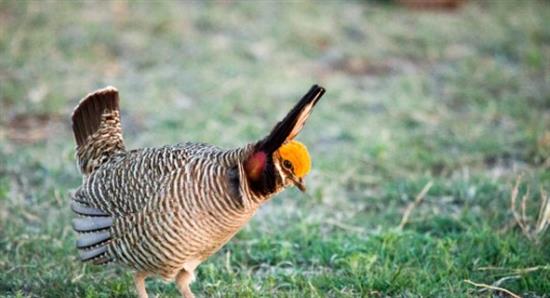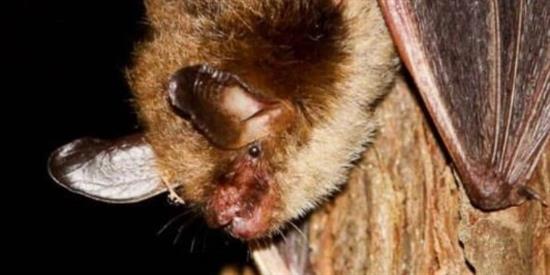Western Caucus Applauds Passage Of CRA's To Protect Farmers And Landowners
Washington,
July 27, 2023
|
Noah Yantis
(202-225-4466)
WASHINGTON, D.C. – Today, the U.S. House of Representatives passed S.J. Res. 9 and S.J. Res. 24, joint resolutions of disapproval under the Congressional Review Act (CRA) on the Biden Administration’s listing of the Lesser Prairie-Chicken under the Endangered Species Act (ESA) and the Administration’s uplisting of the Northern Long-Eared Bat to ‘endangered’ from ‘threatened’ under the ESA. The resolutions passed with bipartisan votes of 221-206 on S.J. Res. 9 and 220-209 on S.J. Res. 24. “As Chairman of the Western Caucus, I know firsthand how radical environmental groups will weaponize the Endangered Species Act in an attempt to end resource development and prevent responsible forest management— and these listings of the Northern Long-Eared Bat and the Lesser Prairie-Chicken are their latest attempt. The Biden Administration continues to ignore our nation’s farmers, ranchers, and landowners who have worked tirelessly to help recover the Lesser Prairie-Chicken’s population through habitat restoration, and uplisted the Northern Long-Eared Bat despite admitting the population decline is due to an incurable disease—not a loss of habitat,” said Chairman Dan Newhouse (WA-04). “These resolutions are critical to preventing burdensome government overreach, and I will continue highlighting the importance of reforming the Endangered Species Act through the Western Caucus-Natural Resources Committee ESA Working Group to prevent future overreaching listings.” "Today's votes on the House floor mark a significant step towards modernizing the outdated and ineffective Endangered Species Act. The verdict is in and the science is indisputable: the ESA has failed time and time again,” said House Committee on Natural Resources Chairman Bruce Westerman (AR-04). “Over its 50-year history, we've recorded only a 3 percent success rate, while lawyers and activists continue to wield this burdensome law as a political weapon instead of a conservation tool. As we continue work to modernize the ESA in our bipartisan working group, today's votes mark a crucial first step in making data-driven conservation decisions." “The Northern Long-Eared Bat suffers from white nose syndrome through no fault of humans, yet its endangered listing allows environmental groups to stifle development across the bat’s range, which encompasses most of the continental U.S. If we're to build infrastructure, permit electricity transmission, mine for the resources we need for everyday life, and properly manage our forests, we need commonsense habitat conservation plans that protect wildlife without harming our economy,” said Vice Chair Pete Stauber (MN-08). “It’s past time we return the Endangered Species Act to its intended use, rather than a tool for radical anti-development activists to exploit. I’m glad to see the House pass this resolution today to overturn this listing.” “Today’s resolutions, and my work to remove the Lesser Prairie-Chicken from the endangered species list, push back against big government,” said Rep. Tracey Mann (KS-01). “The Biden Administration continues to use unscientific, far-fetched claims to wage proxy wars on the agriculture and energy industries and private landowners everywhere. In the case of the Lesser Prairie-Chicken, science shows that bird populations increase and decrease based on the rainfall. We need more rain, not more regulation. President Biden’s rules fly in the face of rural Americans who have worked tirelessly to voluntarily conserve our natural resources and animal habitats. Congress has spoken, and I hope that President Biden will listen – farmers, ranchers, and agricultural producers are the original conservationists, and the federal government must get out of their way and let them do what they do best.” Background: S.J. Res. 9 The passage of S.J. Res. 9, would, if enacted, repeal the Administration’s 2022 listing of the Lesser Prairie-Chicken (LPC) and return the LPC to being managed by state wildlife agencies within its range. On November 25, 2022, the U.S. Fish and Wildlife Service published a final rule that added the lesser prairie-chicken to the federal endangered species list and created two distinct population segments (DPS) with different levels of protections. In the Northern DPS, the species would be listed at threatened in Kansas, Oklahoma, Colorado, and the northern Texas panhandle. In the Southern DPS, which is west Texas and New Mexico, the species would be listed as endangered. This CRA was introduced in the United States Senate by Senator Roger Marshall (R-KS) and passed by a bipartisan vote of 50-49. S.J. Res. 24 The passage of S.J. Res. 24 would, if enacted, prevent the Biden Administration’s uplisting of the Northern Long-Eared Bat to ‘endangered’ from ‘threatened’ under the Endangered Species Act. In 2015, the U.S. Fish and Wildlife Service listed the Northern Long-Eared Bat as threatened under the ESA. As a result of a lawsuit, in 2022 the Service published a final rule listing the bat as endangered. In its listing, the Service stated that the decline in population is due to an incurable fungal disease – White Nose Syndrome – and is NOT attributable to habitat loss caused by human activity. This CRA was introduced in the United States Senate by Senator Markwayne Mullin (R-OK) and passed by a bi-partisan 51-49 vote. |
Stay Connected
Use the following link to sign up for our newsletter and get the latest news and updates directly to your inbox.



